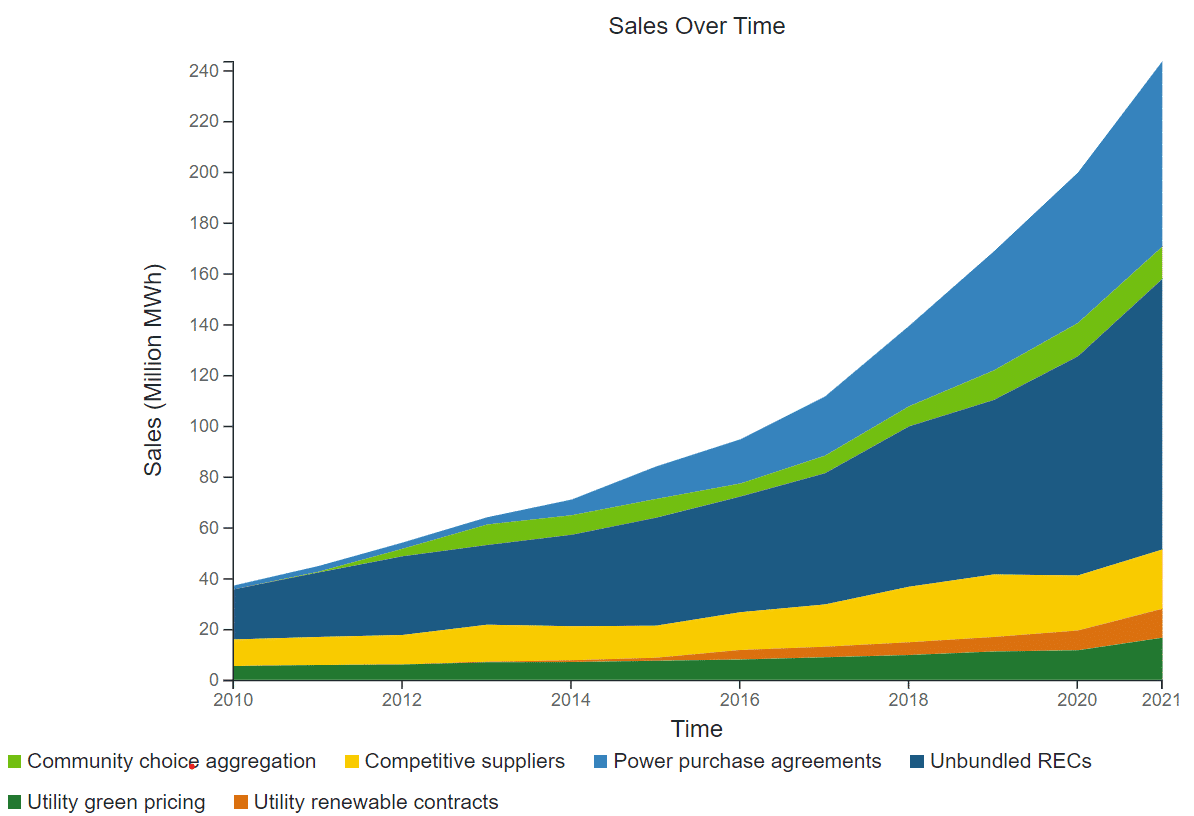The Science-Based Targets Initiative (SBTI) recently issued Building Sector Science Based Target Setting Guidance for public review and consultation. There is a lot to like in the document: It emphasizes the importance of the building sector as a major source of greenhouse gas emissions. It presents a general approach to understanding corporate decarbonization. It increases awareness of underreported categories of emissions, such as fugitive emissions from refrigerants and similar gases. This is commendable, and, for many organizations, it provides practical strategies to set, track, and report on decarbonization. The proposed guidance also excludes some of the most important tools property companies have at their disposal to reduce greenhouse gas emissions: procuring clean, renewable off-site energy.
The new SBTI guidance explicitly states that emissions accounting will be based on “location-based” emissions factors, and organizations shall not consider market-based emissions factors when considering alignment with targets. The guidance does not acknowledge the increasingly diverse options available for credible, transparent clean energy supply. The procurement of these resources is going far beyond balancing annual energy supply and demand. Leaders are designing and executing procurement strategies to achieve true, 24/7 decarbonization on dynamic grids.
Some market participants believe that excluding these “market-based” energy supplies is a “conservative” choice. They prefer to recognize only energy that is “directly” supplied to a property, ideally “on-site.” This approach may be, in part, driven by concerns about the potential for low-quality unbundled renewable energy certificates to undermine decarbonization efforts (Bjørn et al. 2002). However, energy procurement options are changing rapidly. For example, the U.S. Federal Energy Management Program outlines seven different categories for off-site energy procurement differentiated by utility structure and procurement strategy.

The U.S. National Renewable Energy Laboratory has tracked the use of many of these instruments since the early 1990s. Their data show the rapid increase in green power purchasing along with diversification of supply options.

Leading property companies are contributing to these trends with innovation in off-site energy procurement. For example:
- Iron Mountain is the first REIT in the world to operationally purchase 24/7 clean energy for its data center portfolio. It does this through sophisticated agreements that match energy demand with clean energy supply.
- Vasakronan has created innovative, off-site procurement agreements that provide long-term access to clean energy. As a result, the emissions from its facilities are significantly lower than other properties.
- DEXUS is executing an innovative energy procurement strategy as part of its decarbonization commitment. This includes multiple on- and off-site energy sources to supply its properties.
These observations support some important conclusions:
- Buildings are intimately connected with the electricity grids that serve them. Today, buildings use electricity to meet between 50 and 100% of their energy needs. Electricity is overwhelmingly supplied by local electricity distribution systems and regional utilities. Electric supply adapts to real-time changes in building energy demand. This means in real, physical terms buildings and grids are coupled systems.
- Off-site energy procurement strategies are becoming more common, diverse, and cost-effective. Options for clean energy supply now go far beyond “unbundled Renewable Energy Certificates.” Companies are creating advanced procurement strategies to access clean energy across a range of spatial and temporal scales, from rooftops to communities to distant generators. There is a real innovation in these efforts linking technology to supply, often across large-scale portfolios.
- Buildings – and critically the companies and funds investing in them – should be encouraged to procure green power as quickly as possible through credible, transparent combinations of on- and off-site generation. Arbitrary prohibitions on specific kinds of procurement will inhibit innovation and slow climate action.
The best real estate companies are leaning into these issues and opportunities. They understand that buildings are inseparable from energy supply systems. They are creating new ways to meet energy demand through credible, transparent energy procurement. These innovative strategies are integral to the future of decarbonization in the building sector, and they deserve recognition from standard setters and shareholders.
